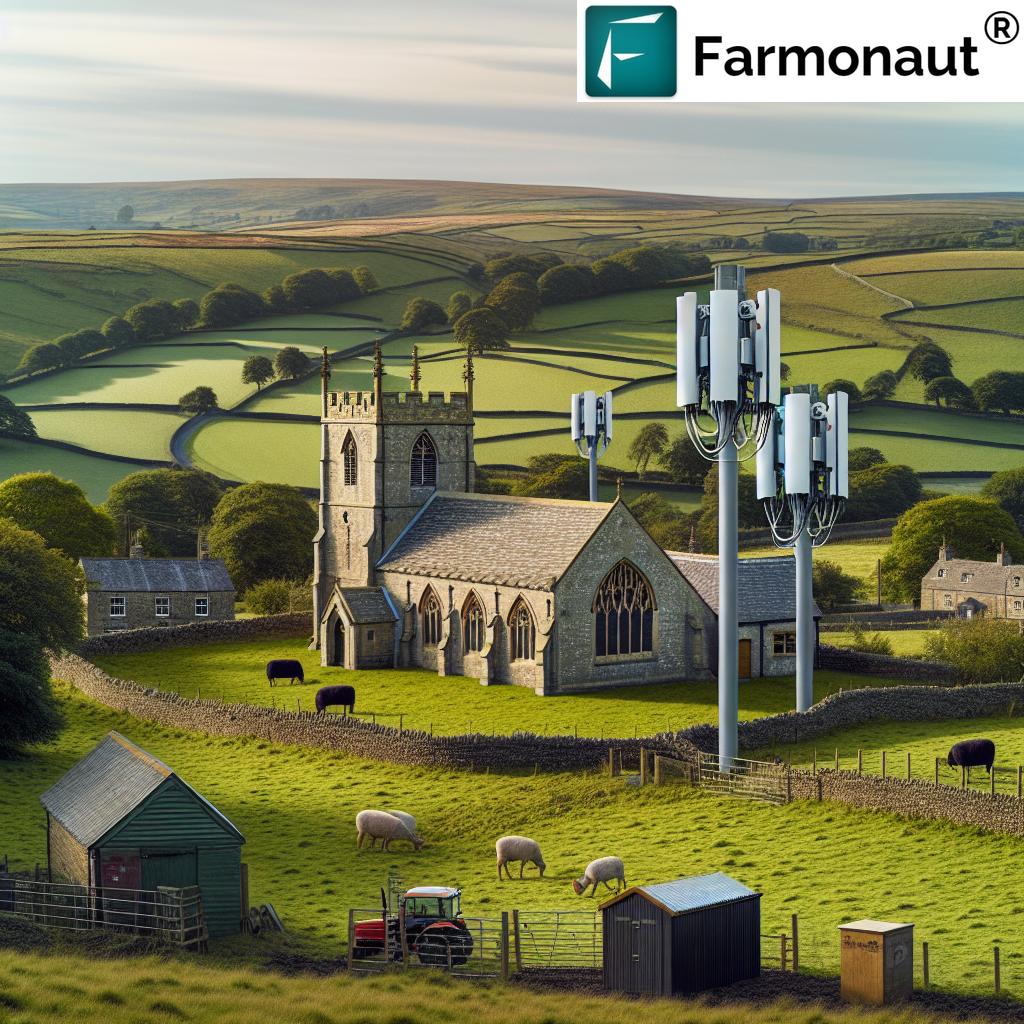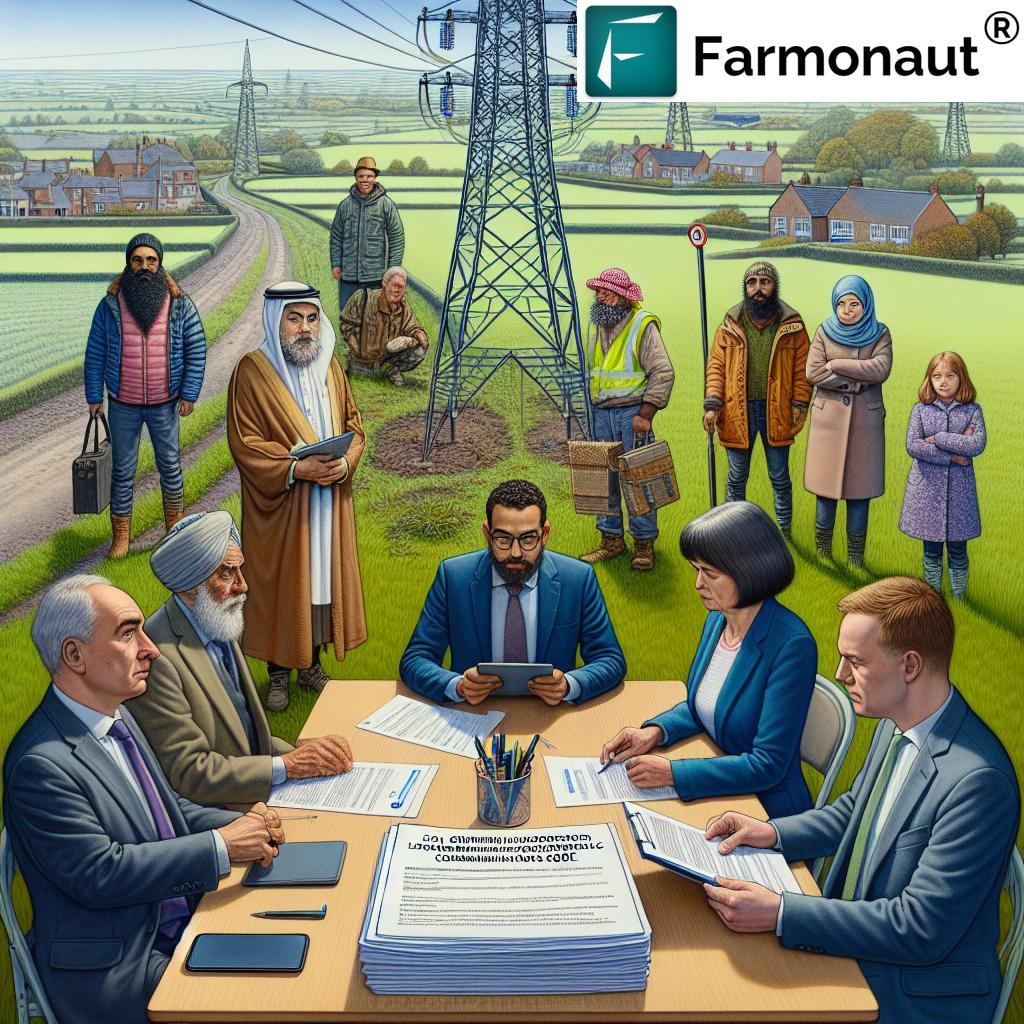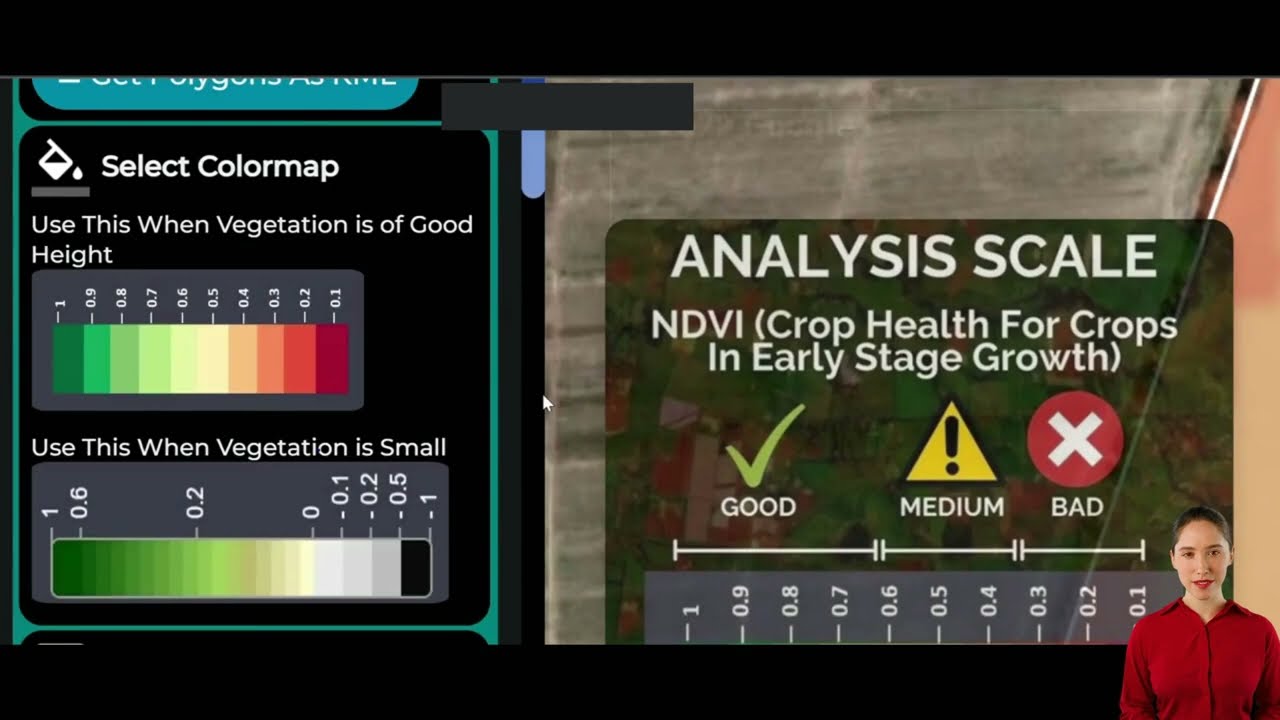5G Rollout in Yorkshire: 7 Hard Truths About Rural Telecom Policy
“Only 8% of rural Yorkshire has full 5G coverage, highlighting major gaps in telecom infrastructure.”
- Introduction: Why the 5G Rollout in Yorkshire Still Lags
- Tracing the Roots: Governing the Rollout Model
- Comparative Impact Table: 5G Rollout Policy Impacts
- 7 Hard Truths About Government Policy on 5G Coverage
- 1. The New Rules Hurt Landowners and the Local Economy
- 2. Rent Cuts Weaken Public and Community Services
- 3. Courts Overcrowded by Mobile Mast Rent Disputes
- 4. Rural Broadband Coverage in the UK Remains Poor
- 5. Infrastructure Model Stifles Cooperation and Investment
- 6. Even Ambitious Targets Are Jeopardized by Flawed Policy
- 7. The Rest of Europe Is Ahead—There’s a Blueprint
- Towards Better Landowner Agreements & Access Models
- How Innovative Technology Supports Rural Agriculture
- FAQ: 5G Rollout, Rural Policy & Infrastructure Access
- Conclusion: How Yorkshire Can Lead the Future in 5G Connectivity
- Farmonaut Subscription Plans
Introduction: Why the 5G Rollout in Yorkshire Still Lags
If you’re reading this in Yorkshire in 2025 and waiting for a page to load, you’re not alone—and it’s not the hills, the weather, or broken technology that’s holding us back. The real bottleneck in the 5G rollout in rural communities is a direct result of government policy on 5G coverage. Despite official promises and repeated calls to improve rural broadband, the truth is that the framework designed to “accelerate” connectivity has, in many ways, done more harm than good. Yorkshire communities—farmers, landowners, schools, and businesses—are at the epicentre of this crisis, experiencing the consequences every day.
How we got here, why current policy needs urgent review, and what a fairer, more effective telecom model looks like are all questions we must tackle for the sake of Yorkshire and rural UK as a whole. Let’s dive deep into the realities of rural telecom policy, expose the seven hard truths, and map the way forward.
Tracing the Roots: Governing the Rollout Model
Historically, the 5G rollout in Yorkshire—like the rest of the UK—relied on mutual cooperation between telecoms operators and those who own the land where infrastructure is installed. Whether it was fields owned by farmers, recreation grounds owned by local councils, roofs atop schools, businesses and, crucially, churches, the landowner agreements for telecom infrastructure fostered a symbiotic relationship:
- Operators installed masts and networks to keep the country connected.
- Landowners received fair rent, creating local financial resilience.
- Society gained reliable mobile and internet access.
That partnership lasted for over three decades. But with the Electronic Communications Code reforms of 2017, the landscape changed overnight. Suddenly, government decided that the old model—a commercial one—should be replaced with a model where telecom mast rent disputes are determined as though every mast was a pylon or pipe; in other words, the valuation of site rents became based only on existing (largely agricultural) land value, not what it represented to mobile operators or the community’s future.
It’s an issue that impacts not just operators and landowners but every rural home, small business, and public institution in Yorkshire. Let’s make sense of the wide-reaching effects in our Comparative Impact Table below:
Comparative Impact Table: The 5G Rollout Impact on Stakeholder Groups in Yorkshire
| Stakeholder Group | Policy Area | Estimated Short-term Impact | Estimated Long-term Impact | Challenges/Concerns |
|---|---|---|---|---|
| Landowners (Farmers, Churches, Councils) | Rent Agreements Infrastructure Rights |
– Rent decrease up to 90% after 2017 reforms (Estimated £900 to £90 per annum/site) – Immediate financial losses |
– Reduced willingness to host infrastructure – Shrinking supplementary income sources (-25% income for churches, as reported) |
– Disincentive to lease land – Funding gap for upkeep/maintenance – High legal costs from disputes |
| Telecom Operators | Access Rights Rollout Costs |
– Short-term cost reduction in site rents (by up to 90%) – Increase in legal proceedings and administrative costs |
– Slower rollout due to disputes (UK 5G ranking: 30th/39 for availability) – Reputational damage and strained relationships |
– Delays from court backlog – Unreliable access to rural sites |
| Rural Communities (Residents, Schools, NHS Trusts) | Local Economic Impact Connectivity Rates |
– Loss of vital funding (ex: churches lose 25% of income) – Service closures, lack of maintenance |
– Persistent digital divide (Only 8% rural 5G coverage in Yorkshire) – Falling further behind urban areas |
– Difficulty accessing digital services – Lower quality of life, fewer educational/economic opportunities |
“Rural landowners in the UK have seen telecom rent agreements drop by up to 90% since 2017.”
7 Hard Truths About Government Policy on 5G Coverage
1. The New Rules Hurt Landowners and the Local Economy
Let’s be clear—at the heart of the Electronic Communications Code reforms lies a policy decision to treat telecom mast sites like utility pylons. This model, called no-scheme valuation, pegs rent paid for a mast to the underlying agricultural baseline of the land rather than its operational value to a mobile operator.
- Fair commercial rent agreements that funded community services—like the lights in St Mary’s Church, Gomersal—were slashed, sometimes by 90%.
- Farmers and local landowners, once willing partners, found themselves essentially subsidizing vast corporate profits—with little in return.
- This produced very real financial losses and eroded the incentive to participate in the nation’s infrastructure drive.
Across Yorkshire, land and community space remain vital not only for agriculture—where companies like Farmonaut support data-driven success—but also as the fabric of our social and economic lives.
For our agricultural stakeholders, exploring advanced carbon footprint tracking solutions can introduce extra revenue streams and sustainability certifications to counterbalance policy-driven income drops.
2. Rent Cuts Weaken Public and Community Services
When policy cuts mobile mast rents so aggressively, the ripple effects reach well beyond individual landowners. Churches, which historically hosted a significant portion of rural infrastructure, often used this dependable rental income for essential maintenance, heating, and repairs.
- St. Mary’s Church in Gomersal—once able to fund a quarter of its annual budget from mast rent—publicly warned it could not keep the doors open without that income. This forced difficult choices around building upkeep, community events, and outreach services.
- Schools, councils, and NHS trusts have also suffered, often turning down new agreements because compensation no longer offsets the disruption or risk.
This is the stark impact of telecom mast rents on churches and vital rural services: when the rent model is flawed, services that knit together our communities are put at serious risk.
3. Courts Overcrowded by Mobile Mast Rent Disputes
Prior to 2017, the UK saw just 33 legal cases involving telecom site agreements in 30 years. Since the reforms, there have been over 1,000 court cases—a staggering increase. These are not abstract disputes: NHS trusts, schools, and charities across Yorkshire have been dragged into lengthy and expensive litigation, typically with “no option” but to comply or defend their ground.
- During the height of the pandemic, one NHS trust was forced to reimburse a mobile operator £300,000 after losing a rent dispute—money that could have been spent on patient care.
- Mobile mast rent disputes tie up precious resources and delay actual infrastructure development.
- This adversarial model breeds distrust and reduces future cooperation for site hosting across Yorkshire.
For landowners and councils, leveraging technology for alternative revenue streams, such as blockchain-based agricultural traceability from Farmonaut, may help to diversify income amidst legal uncertainty.
4. Rural Broadband Coverage in the UK Remains Poor
Despite lofty announcements, the UK—especially Yorkshire’s rural regions—lags on nearly every 5G metric.
- We rank 30th out of 39 countries in 5G availability and a staggering 37th for network quality.
- Even in regional hubs such as Leeds and Sheffield, download speeds struggle to keep up with cities like Glasgow and Bristol.
- In places like Helmsley or Skipton, basic mobile access—let alone gigabit 5G—is a distant dream.
Our competitive disadvantage grows as more countries leap ahead, deploying smarter policies and flexible land access models that balance fairness and progress.
5. Infrastructure Model Stifles Cooperation and Investment
It’s not a lack of willingness to host or develop 5G infrastructure that’s the problem—it’s the rules that make lease agreements unattractive. When councils and farmers are told their generous cooperation is now “worth” just a token sum, they quietly refuse to sign new agreements.
- The reforms were meant to speed up rollout, but the opposite happened—fewer partners, less trust, and widespread reluctance to install new masts.
- The telecom mast lease valuation process is now a source of friction rather than partnership.
- As reported, even legal professionals are braced for a flood of new litigation with the extension of code reforms to 15,000 additional sites in 2025.
It is crucial that any future model for access and rents recognises the value landowners add to the nation’s connected infrastructure.
Those in agriculture eager to improve operational efficiency should explore solutions such as satellite-aided fleet and resource management, helping offset connectivity shortfalls while ensuring local businesses remain competitive.
6. Even Ambitious Targets Are Jeopardized by Flawed Policy
The government’s goal of achieving nationwide standalone 5G by 2030 is well-intentioned. But as critics—including high-profile figures in both Labour and opposition—have warned, the current approach squanders momentum and fails to incentivize the very partnerships needed for progress.
- The more legal red tape and the less financial reward for hosting sites, the fewer landowners, councils, and institutions will participate.
- Communities are growing impatient with broken promises. In Yorkshire, we see frustrated residents disconnected from the digital future, while successive reforms only deepen the rift.
Policy decisions taken in Westminster are felt directly on Yorkshire’s farms, churches, and marketplaces. They determine whether a small business in Northallerton can compete online, whether a school in Scarborough makes use of e-learning, and whether an elderly resident in the Dales has digital access to vital health services.
To bridge this digital divide, it is equally important to invest in large-scale farm management solutions that harness crop and environmental data, boosting productivity even where connectivity lags.
7. The Rest of Europe Is Ahead—There’s a Blueprint
As the UK persists with court-led disputes and unsustainable rent models, the rest of Europe is already proving there’s a different way:
- The EU’s new Gigabit Infrastructure Act outlaws rent regulation in favour of fair-value deals between telecoms and landowners.
- Where the UK’s policy produces gridlock, our European neighbours enjoy streamlined access, decisive investment, and almost zero litigation.
- No price-control or forced valuation, simply an understanding that mutual benefit—and trust—delivers better, faster results for everyone.
Why can’t the UK, and especially Yorkshire, lead the way in designing a smarter incentive model? One that encourages landowners to host infrastructure, eliminates unnecessary bureaucracy, and narrows the rural-urban gap in digital coverage.
If the policy debate evolves toward fairness and engagement, we can accelerate 5G’s benefits for every corner of Yorkshire—leaving the hills, the weather and the old arguments behind.
Towards Better Landowner Agreements & Access Models
It’s time to rethink the model of 5G rollout in rural communities. Here’s what forward-thinking policy might look like:
- Landowner agreements for telecom infrastructure must include fair rent reflecting both inconvenience and the essential nature of rural digital infrastructure.
- Adopt market-based negotiation models—similar to the EU’s Gigabit Infrastructure Act—to reduce courtroom battles.
- Integrate local councils, farmers, churches, and community stakeholders as partners, not as “statutory obstacles.”
- Streamline government processes and invest in affordable digital literacy and inclusion support, especially for agriculture and small businesses.
Meanwhile, for agricultural businesses, solutions like AI-based crop and plantation advisory tools can help maximize per-acre output and sustainability, even where 5G is slow to arrive.
How Innovative Technology Supports Rural Agriculture
While policymakers debate how to best connect rural areas to 5G, technology solutions like Farmonaut are already empowering Yorkshire’s agricultural sector with tools that:
- Use satellite imagery and AI to monitor crop health, analyze soil moisture, and detect vegetative stress—offering real-time, actionable advice through user-friendly web and mobile apps.
- Enable blockchain-based traceability to strengthen supply chain trust and unlock premium markets for local produce.
- Support agribusiness and government agencies with crop area/yield estimation and compliance tracking—reducing fraud in crop loan and insurance processes.
For farmers, agribusinesses, and councils grappling with unreliable 5G coverage, these solutions provide resilience, enhance productivity, and ensure data-driven decision-making regardless of current connectivity—putting rural Yorkshire at the leading edge of precision agriculture.
FAQ: 5G Rollout, Rural Policy & Infrastructure Access
Q1: How have telecom mast rents changed for rural landowners in Yorkshire?
Since the 2017 reforms to the Electronic Communications Code, typical rents paid to rural landowners, including farmers, churches, and councils, have seen drops of up to 90%. What used to be a significant income stream is now barely enough to cover basic maintenance, severely impacting local finances.
Q2: What are the main obstacles to faster 5G rollout in rural communities?
The biggest barriers are current government policy on site valuation and access. These discourage landowners from hosting new masts, fuel legal disputes, and slow infrastructure projects, particularly in places like Helmsley, Skipton, and the Yorkshire Dales.
Q3: Are there alternative models to the current policy?
Yes. Across Europe, countries have moved to fair-market negotiations rather than regulated pricing. The EU’s Gigabit Infrastructure Act supports open, fair agreements, reduces bureaucracy, and nearly eliminates costly litigation.
Q4: What can rural communities do to offset declining telecom rents?
Communities can explore additional technology-driven opportunities, such as carbon footprint tracking, product traceability, and fleet management to diversify revenue and leverage existing land and assets more efficiently.
Q5: What role can modern agri-tech solutions play in bridging the connectivity gap?
Solutions like Farmonaut’s web and mobile apps enable precision agriculture, increased sustainability, and better resource management, even in coverage-poor zones. By making critical farm data accessible, Farmonaut helps ensure Yorkshire farmers remain globally competitive.
Conclusion: How Yorkshire Can Lead the Future in 5G Connectivity
The harsh reality is that, in 2025, Yorkshire’s rural communities remain among the worst affected by communications policy missteps. Landowners, councils, and community institutions are squeezed by rent reductions and conflicts, while towns fall further behind the rest of the UK and Europe in 5G rollout.
With the right vision, however, this can change. We need to:
- Pause and rigorously review current reforms with a view to fairness and partnership-driven agreements.
- Embrace incentives that value the contributions of landowners and local institutions.
- Streamline legal and bureaucratic obstacles so that critical infrastructure can be installed where it’s most needed.
- Draw from the best international models that put partnership, not antagonism, at the heart of rural connectivity.
- Empower communities with the latest agri-tech solutions, like Farmonaut’s large-scale farm management tools and blockchain traceability, making legacy policy less of a barrier.
Because the issue is bigger than technology or the hills: it’s about opportunity, equality, and Yorkshire’s future as a connected, thriving region.
Farmonaut Subscription Plans
Ready to transform the way you manage your land or agricultural enterprise, regardless of the challenges rural policies create? Explore real-time crop health, satellite data, blockchain traceability, and more with Farmonaut’s affordable subscription plans below:
Explore innovation, sustain productivity, and bridge the rural divide—try Farmonaut today.






















